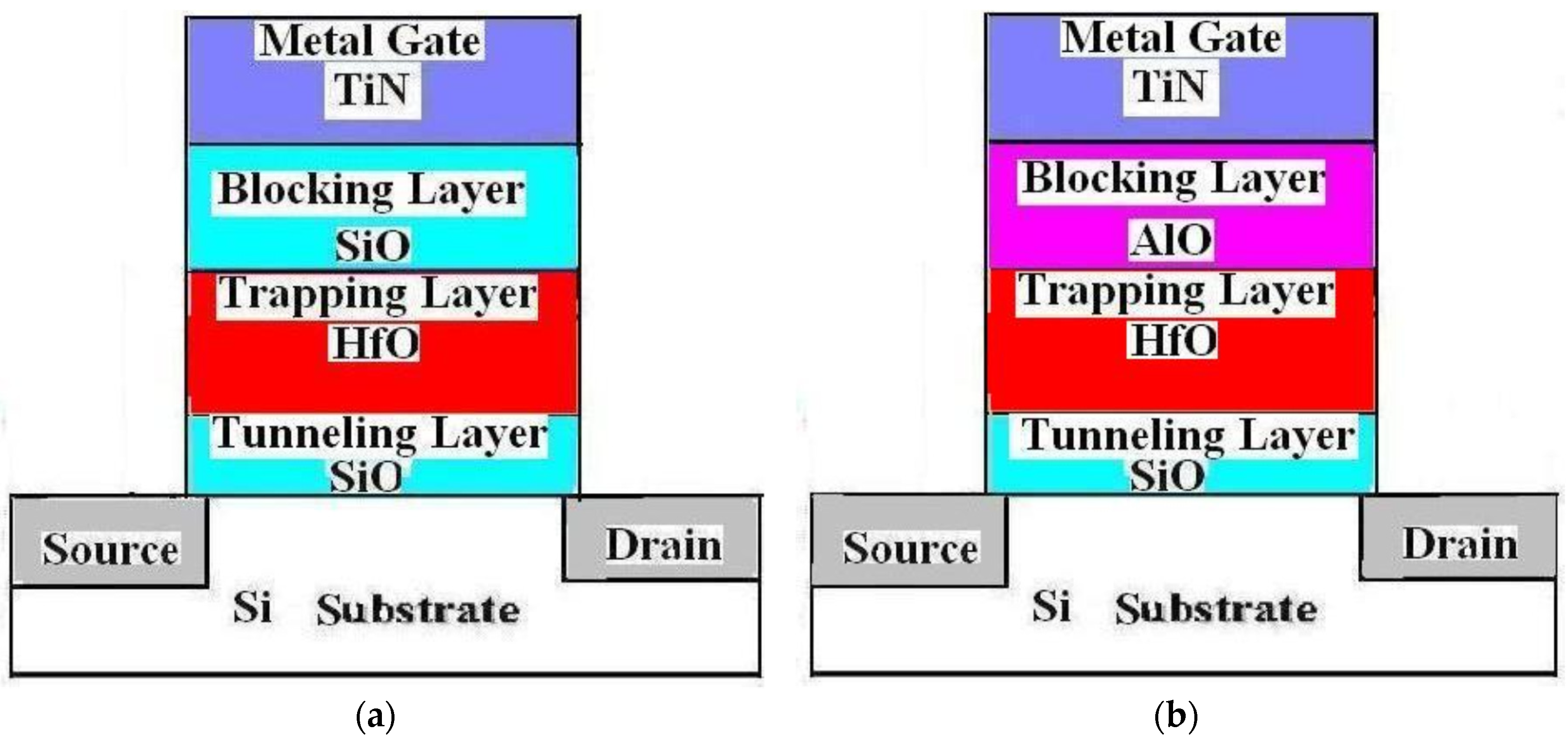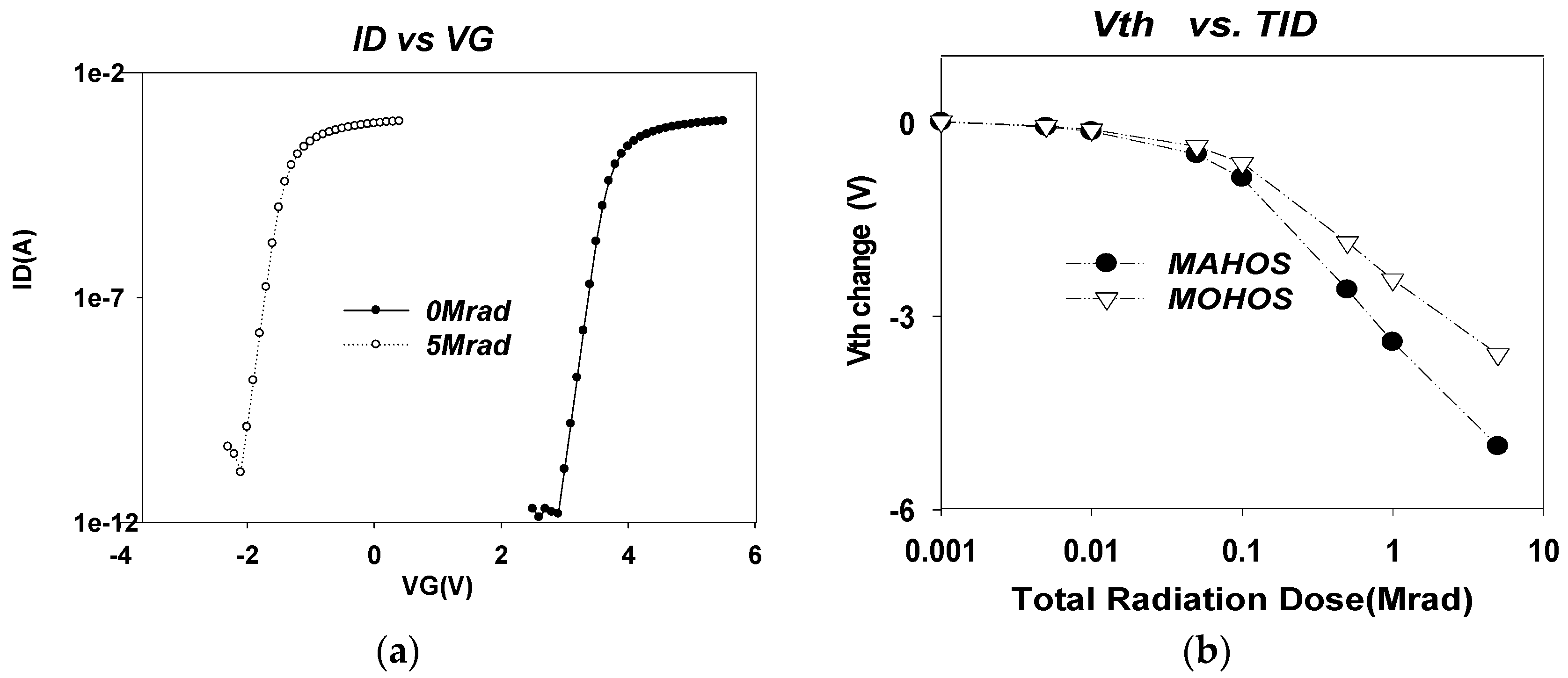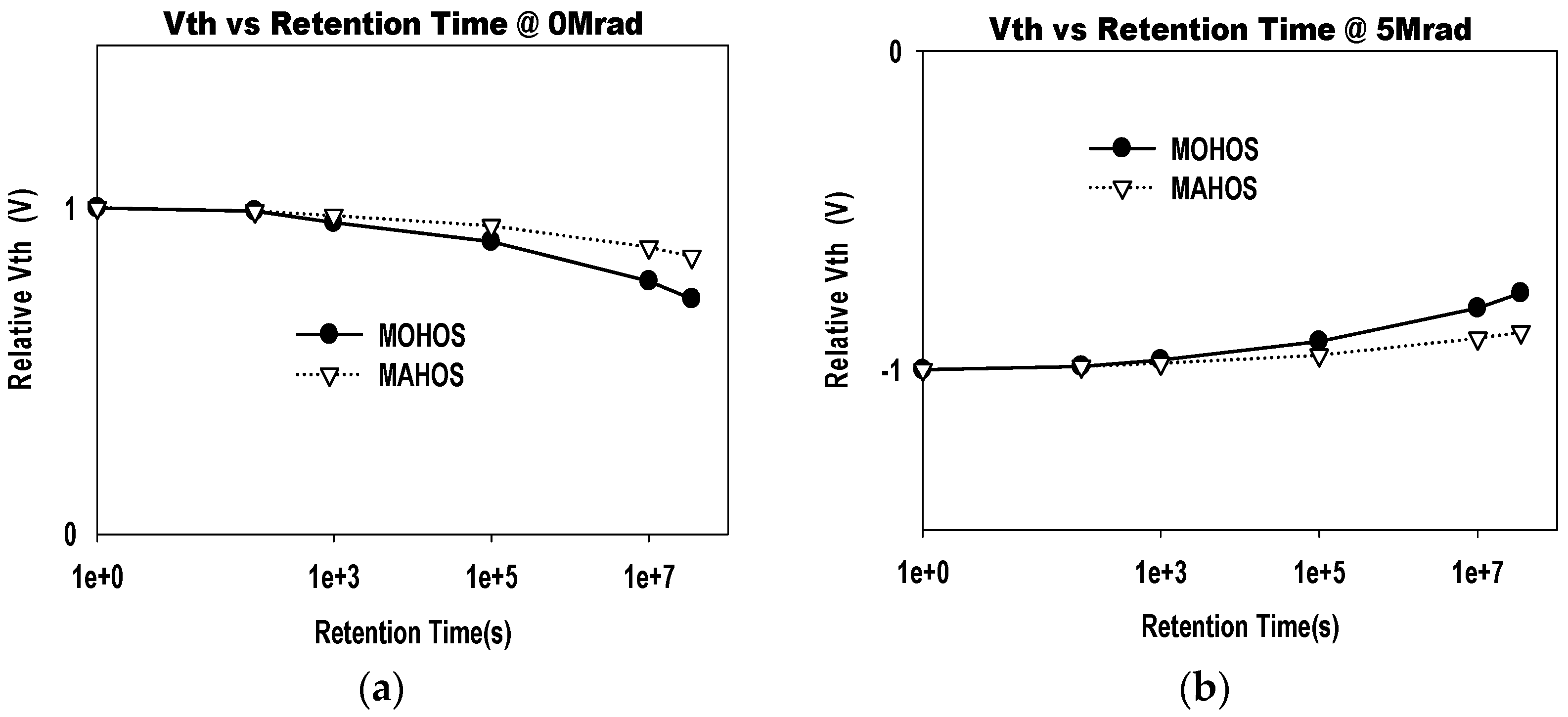Performance of TAHOS Device as Nonvolatile TID Radiation Sensor †
Abstract
:1. Introduction
2. Experiments
3. Results
4. Conclusions
Author Contributions
Acknowledgments
Conflicts of Interest
References
- Hsieh, W.C.; Lee, H.D.; Jong, F.C. An Ionizing Radiation Sensor Using a Pre-Programmed MAHAOS Device. Sensors 2014, 14, 14553–14566. [Google Scholar] [CrossRef] [PubMed]
- Hsieh, W.C.; Lee, H.D.; Jong, F.C.; Wu, S.C. An Performance Improvement of Total Ionization Dose Radiation Sensor Devices Using Fluorine-Treated MOHOS. Sensors 2016, 4, 450. [Google Scholar] [CrossRef] [PubMed]
- Hsieh, W.C.; Lee, H.D.; Jong, F.C.; Wu, S.C. Effect of N Implantation on the Performance of TOHOS Total Ionizing Dose Radiation Sensor Device. Sens. Mater. 2016, 5, 577–584. [Google Scholar]
- Hsieh, W.C.; Lee, H.D.; Jong, F.C.; Wu, S.C. Charge Retention Improvement of Nonvolatile Radiation Sensor Using MONOS with Si-rich Nitride and Oxy-Nitride as Stack Charge-Trapping Layer. Sens. Mater. 2016, 9, 1023–1033. [Google Scholar]
- Draper, B.; Dockerty, R.; Shaneyfelt, M.; Habermehl, S.; Murray, J. Total dose radiation response of NROM-style SOI non-volatile memory elements. IEEE Trans. Nucl. Sci. 2008, 55, 3202–3205. [Google Scholar] [CrossRef]
- Tan, Y.N.; Chim, W.K.; Choi, W.K. Hafnium Aluminum Oxide as Charge Storage and Blocking-Oxide Layers in SONOS-Type Nonvolatile Memory for High-Speed Operation. IEEE Trans. Electron Devices 2006, 53, 654. [Google Scholar] [CrossRef]



Publisher’s Note: MDPI stays neutral with regard to jurisdictional claims in published maps and institutional affiliations. |
© 2016 by the authors. Licensee MDPI, Basel, Switzerland. This article is an open access article distributed under the terms and conditions of the Creative Commons Attribution (CC BY) license (https://creativecommons.org/licenses/by/4.0/).
Share and Cite
Jong, F.-C.; Hsieh, W.-C. Performance of TAHOS Device as Nonvolatile TID Radiation Sensor. Proceedings 2017, 1, 8. https://doi.org/10.3390/ecsa-3-C001
Jong F-C, Hsieh W-C. Performance of TAHOS Device as Nonvolatile TID Radiation Sensor. Proceedings. 2017; 1(2):8. https://doi.org/10.3390/ecsa-3-C001
Chicago/Turabian StyleJong, Fuh-Cheng, and Wen-Ching Hsieh. 2017. "Performance of TAHOS Device as Nonvolatile TID Radiation Sensor" Proceedings 1, no. 2: 8. https://doi.org/10.3390/ecsa-3-C001
APA StyleJong, F.-C., & Hsieh, W.-C. (2017). Performance of TAHOS Device as Nonvolatile TID Radiation Sensor. Proceedings, 1(2), 8. https://doi.org/10.3390/ecsa-3-C001




